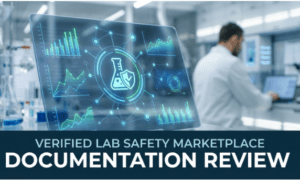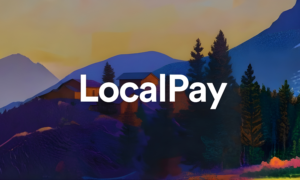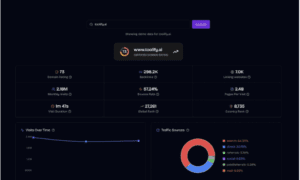“Quality assurance isn’t about perfection; it’s about managing uncertainty with intelligence, agility, and empathy,” says Senior Supervisor in Software Quality, Sindhuri Korrapati. The remark, made during a recent leadership panel on digital risk management, captures the subtle shift across the software industry—a transition from risk-agnostic testing to risk-based assurance.
In an industry where software failure can shut down markets, compromise patient data, or disrupt product quality, innovative leaders such as Korrapati stand out not only for their technical mastery but also for their advanced thinking. Her vision is emblematic of a new class of leaders pushing software quality beyond scripts and scorecards toward strategic foresight. “The velocity of digital transformation leaves no room for reactive quality,” she continues, “Risk intelligence must sit at the heart of assurance.”
The New Economics of Software Assurance
The market for software assurance—the broad umbrella of practices that ensure software reliability, security, and compliance—is forecast to leap from about $10 billion in 2023 to $25 billion by 2032, growing annually at roughly 11%. North America still commands the largest share, but Asia-Pacific now leads in terms of growth, expanding by nearly 13% annually as businesses across India, China, and Southeast Asia automate core industries and grapple with escalating cyberthreats.
The urgency is unmistakable. In just the first half of 2025, regulators worldwide have issued fines totaling over $2 billion for lapses in software-related compliance. These can be boiled down to three things: incomplete testing, blind spots in AI-driven systems, and the pressure to release faster than teams can securely validate.
For Korrapati, this landscape should be seen as an opportunity—a chance to apply modern, risk-based thinking that balances pace with confidence. “The traditional QA function was obsessed with rigorous testing of every requirement,” she discusses. “But in complex systems powered by AI and microservices, predictive prevention—anticipating where risks emerge—is the new quality frontier.”
From Testing to Assurance: A Strategic Turn
Over the past decade, quality engineering has evolved from manual verification to holistic assurance. The rise of DevSecOps, embedding security into every stage of the pipeline, was only the beginning; Consultants say that RiskOps may be the next step, where software assurance integrates with enterprise risk functions seamlessly.
“Testing is a verb. Assurance is a philosophy,” Korrapati would often tell her peers. “When a release decision becomes a boardroom conversation, you know you’ve elevated quality from code to consequence.”
Indeed, consulting giants from IBM to Accenture have reframed their offerings accordingly. IBM’s recent AI-driven assurance suite can identify vulnerability clusters before code hits production servers, cutting incident-related costs by up to 45% in pilot studies.
However, smaller firms, particularly those in healthcare and fintech, struggle to adopt these frameworks consistently. Critics, such as London-based analyst Ravi Naidu, warn that “risk-based assurance” can too easily devolve into mere jargon. “You can quantify probabilities all you want,” he says, “but culture, not tooling, remains the weakest link.”
AI’s Double-Edged Role
AI is both the cause and cure in this unfolding drama. As machine learning models drive automation deeper into testing suites, the software development market—projected to hit $1 trillion by 2030—faces a paradox. Tools like autonomous code analyzers accelerate delivery and introduce opaque risks when systems learn imperfectly.
Korrapati is cautious yet optimistic. “AI isn’t eliminating QA jobs,” she insists. “It’s reshaping them into roles that demand critical judgment, ethical reasoning, and systems thinking.” She points to her teams, where generative AI helps simulate thousands of user scenarios, but human oversight decides which anomalies matter.
When Risk Becomes Design
The current wave of risk-based assurance methodologies draws intellectual lineage from manufacturing and finance, sectors that have long used Monte Carlo simulations and Value at Risk matrices. In software, this translates into mapping potential failure modes against business-critical outcomes rather than raw defect counts.
“Every component must earn its deployment,” Korrapati says. Her teams conduct “assurance samplings” akin to financial stress testing, before go-lives. This strategy, she argues, scales quality far more sustainably than exhaustive regression runs.
Market data support her claim. In 2024, enterprises adopting risk-prioritized testing reported 20% faster release cycles and 15% fewer post-release incidents on average. Even regulators are paying attention: the U.S. National Institute of Standards and Technology (NIST) now recommends risk-weighted validation in critical AI software certifications.
Still, critics urge caution. “Risk-based doesn’t mean risk-free,” Naidu contends. “Without continuous validation loops, teams might normalize higher failure thresholds.”
Korrapati acknowledges this. “It’s about knowing which risks to mitigate, which to monitor, and which to accept,” she says. “Software today is a living system. If you chase absolute safety, you’ll paralyze innovation.”
Sindhuri Korrapati’s Contributions
Sindhuri Korrapati has worked with some of the most influential organizations in the life sciences sector, including Medtronic, Zimmer Biomet, and Gilead Sciences. Her extensive experience with these global leaders has provided her with a deep understanding of the challenges and opportunities surrounding software testing and validation in the regulated life sciences environment.
Currently working with a pioneer in surgical robotics, Korrapati stands at the forefront of validating next-generation GxP software systems that ensure patient safety and uphold the highest product quality standards. Her work plays a pivotal role in maintaining the reliability and compliance of advanced medical technologies that directly impact patient outcomes.
Beyond her professional contributions, Korrapati is also an active thought leader in the life sciences community. Her widely recognized article, “Trust but Verify: Validating AI in Pharma’s GxP World,” published in Pharmaceutical Online, has drawn significant attention from industry experts. The piece underscores her leadership in shaping the conversation around responsible AI validation and compliance within the pharmaceutical and biotechnology sectors.
Regulation, Reputation, and the Road Ahead
Experts forecast that by 2030, more than 70% of enterprise software will be subject to stricter assurance mandates, driven by privacy laws and critical system regulations. Financial institutions already face quarterly resilience attestations; medical software will likely follow.
As regulations evolve, software assurance continues to be a specialized field, valued for its niche expertise in ensuring compliance and security.
Still, she warns against over-regulation. “Compliance should guide, not constrain,” she says. “If teams treat regulation as a checklist, they’ll meet the letter but miss the spirit of assurance.”
Korrapati envisions a future of co-evolution: humans and algorithms auditing each other’s blind spots, enterprise ecosystems behaving more like adaptive organisms than static hierarchies. “Resilience,” she insists, “is not a feature—it’s an outcome.”
Lessons from the Risk Frontier
In the end, what distinguishes leaders like Sindhuri Korrapati is technical command and the ability to translate complexity into clarity. Her approach collapses divides—between developer and auditor, between short-term delivery and long-term reputation.
When asked what motivates her, she pauses. “Software runs the world, but people run software,” she says softly. The better we understand risk, our own limits, our systems, our world’s, the more humane our technology becomes.”
It is a fitting coda for an industry learning to see quality not as flawlessness, but as foresight, a shift in perspective with consequences far beyond code.



































